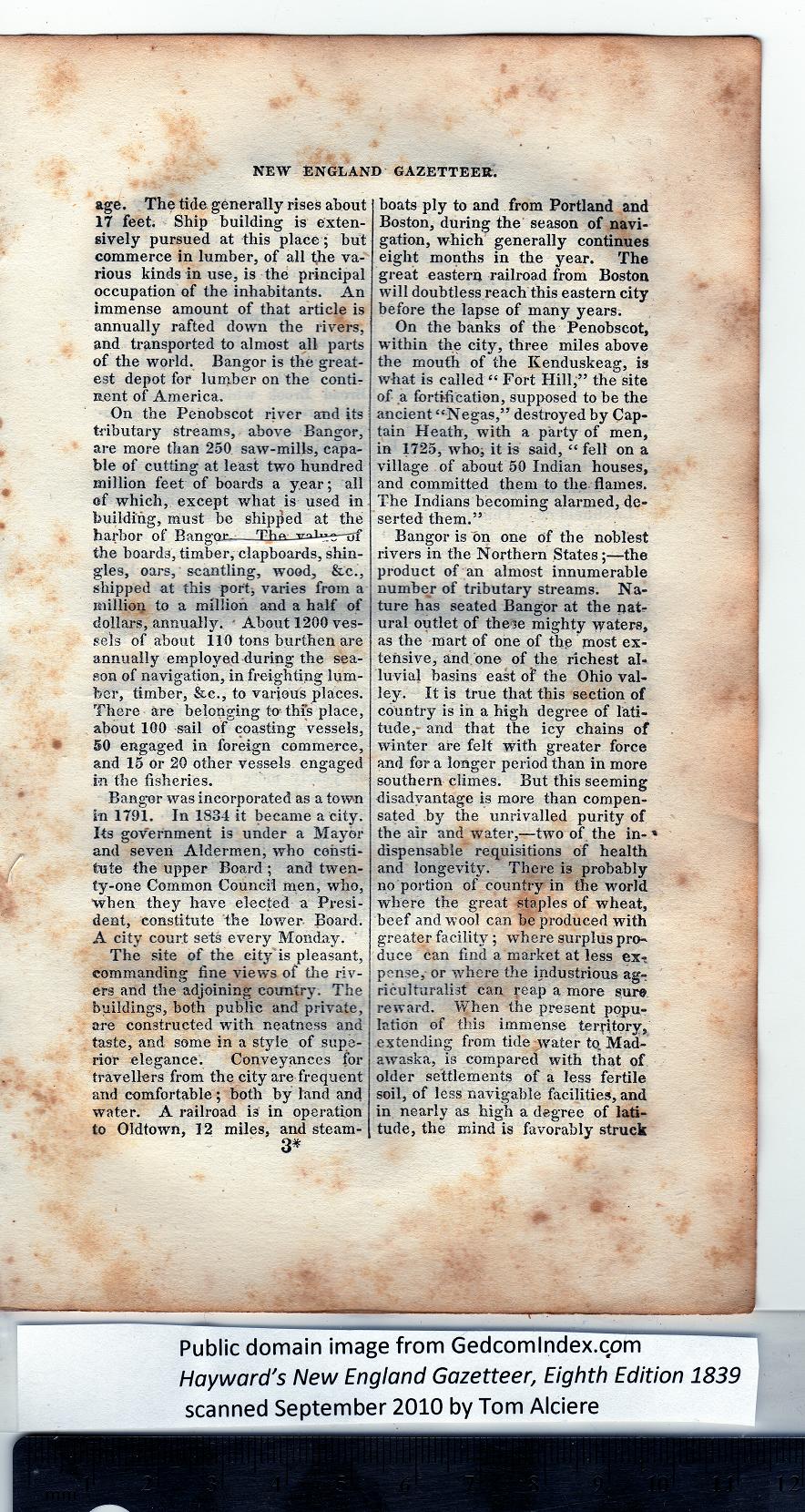|
age. The tide generally rises about
17 feet. Ship building is exten-
sively pursued at this place; but
commerce in lumber, of all the va-
rious kinds in use, is the principal
occupation of the inhabitants. An
immense amount of that article is
annually rafted down the rivers,
and transported to almost all parts
of the world. Bangor is the great-
est depot for lumber on the conti-
nent of America.
On the Penobscot river and its
tributary streams, above Bangor,
are more than 250 saw-mills, capa-
ble of cutting at least two hundred
million feet of boards a year; all
of which, except what is used in
building, must be shipped at the
harbor of Bangor-—
the boards, timber, clapboards, shin-
gles, oars, scantling, wood, &c.,
shipped at this portj varies from a
million to a million and a half of
dollars, annually. About 1200 ves-
sels of about 110 tons burthen are
annually employed during the sea-
son of navigation, in freighting lum-
ber, timber, &c., to various places.
There are belonging to this place,
about 100 sail of coasting vessels,
50 engaged in foreign commerce,
and 15 or 20 other vessels engaged
in the fisheries.
Bangor was incorporated as a town
in 1791. In 1834 it became a city.
Its government is under a Mayor
and seven Aldermen, who consti-
tute the upper Board ; and twen-
ty-one Common Council men, who,
when they have elected a Presi-
dent, constitute the lower Board.
A city court sets every Monday.
The site of the city is pleasant,
commanding fine views of the riv-
ers and the adjoining country. The
buildings, both public and private,
are constructed with neatness and
taste, and some in a style of supe-
rior elegance. Conveyances for
travellers from the city are frequent
and comfortable; both by land and
water. A railroad is in operation
to Oldtown, 12 miles, and steam-
3* |
boats ply to and from Portland and
Boston, during the season of navi-
gation, which generally continues
eight months in the year. The
great eastern railroad from Boston
will doubtless reach this eastern city
before the lapse of many years.
On the banks of the Penobscot,
within the city, three miles above
the mouth of the Kenduskeag, is
what is called “ Fort Hill,” the site
of a fortification, supposed to be the
ancient “Negas,” destroyed by Cap-
tain Heath, with a party of men,
in 1725, whoi it is said, “ fell on a
village of about 50 Indian houses, i
and committed them to the flames. 1|
The Indians becoming alarmed, de- j
serted them.” ;
Bangor is on one of the noblest
rivers in the Northern States;—the
product of an almost innumerable
number of tributary streams. Na-
ture has seated Bangor at the nat-
ural outlet of these mighty waters,
as the mart of one of thq most ex-
tensive, and/one of the richest al-
luvial basins east of the Ohio val-
ley. It is true that this section of ,
country is in a high degree of lati-
tude,- and that the icy chains of
winter are felt with greater force
and for a longer period than in more
southern climes. But this seeming
disadvantage is more than compen-
sated by the unrivalled purity of
the air and water,—two of the in- *
dispensable requisitions of health
and longevity. There is probably
no portion of country in the world
where the great staples of wheat,
beef and wool can be produced with
greater facility ; where surplus pro-
duce can find a market at less ex-
pense, or where the industrious agr :
riculturalist can peap a more sure i
reward. When the present popu-
lation of this immense territory, I
extending from tide water tq Mad- )
awaska, is compared with that of i
older settlements of a less fertile
soil, of less navigable facilities, and
in nearly as high a degree of lati-
tude, the mind is favorably struck |
